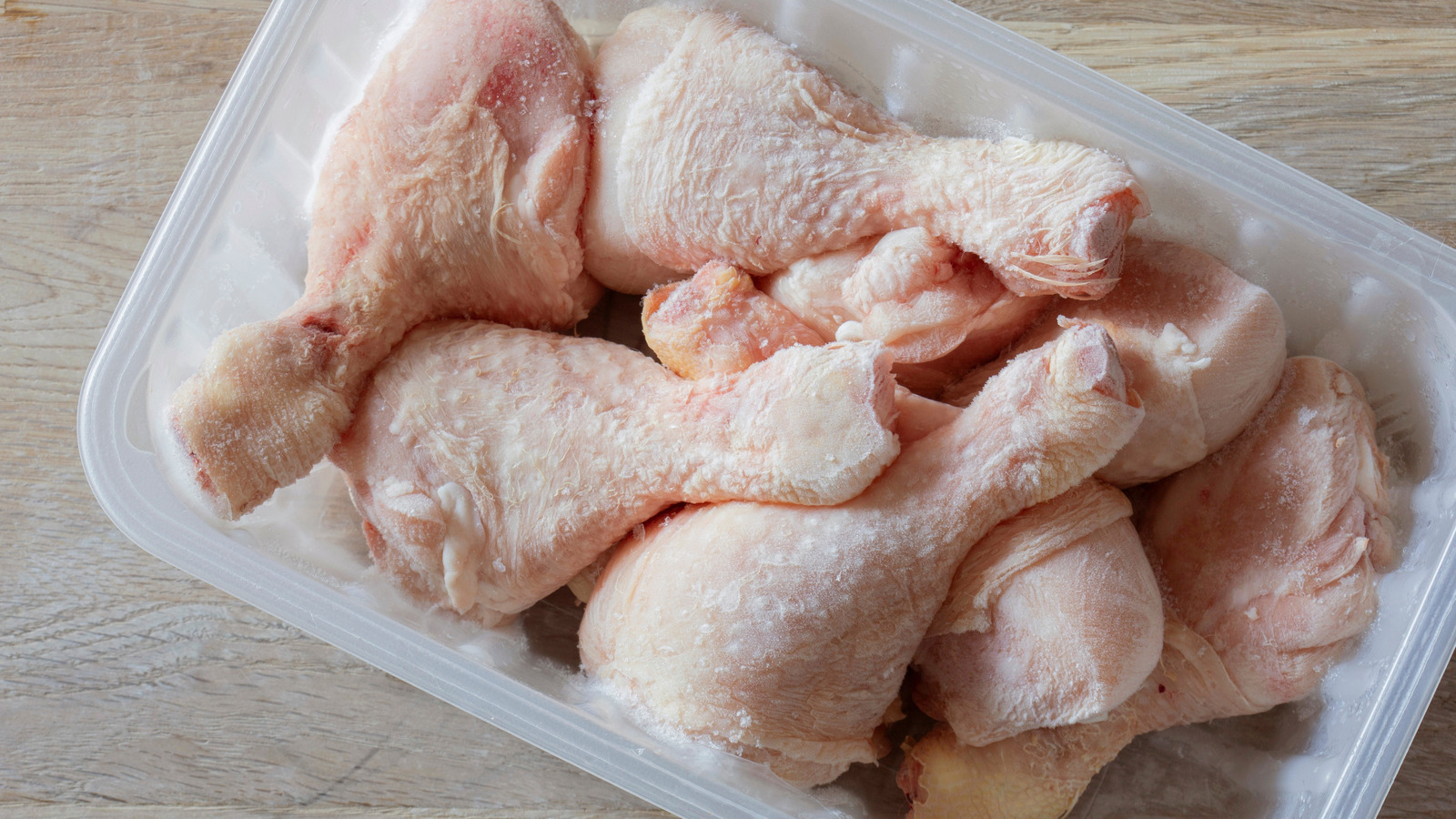It can’t be just us who does this. We buy chicken and other meats, freeze them, and forget about them. If this is you too, and you grabbed some frozen chicken out of your freezer to make our roasted lemon chicken recipe, you might also notice something unsettling about the meat’s color. Instead of that pale, peachy shade definitively of chicken, there are spots of green all over the meat.
Now, while the color may look disturbing, don’t chuck away or toss that frozen chicken into the compost bin just yet. Those green spots may actually not be mold, especially if there are no other signs of the meat spoiling. If there is only slight green discoloration, you may be able to thaw the chicken and consume it safely after cooking it.
But what exactly is it that can make frozen chicken green? There are three main reasons, so let’s dive right in.
How to tell if your green chicken is actually spoiled
The first reason is that the chicken is actually spoiled. The best way to tell if your chicken has gone bad is to sniff it for an unpleasant, sour scent and check for slime and changes in the meat texture, as spoiled meat tends to be mushy. Green spots may be mold, but rotten chicken can also be gray and yellowish.
Once you thaw the chicken, the signs of spoilage will be more prominent. It will leak out its juices and feel slimy. Rotten chicken will also taste as sour as it smells. We don’t recommend putting the chicken in your mouth. It’s also not a good idea to cut out the green parts of the chicken; it’s not worth salvaging spoiled meat.
But let’s say the chicken breast is woody and green, and has a strange, stringy, and tough texture. This textural change does not mean your chicken is spoiled. You don’t have to discard this chicken if no other signs of spoilage are present.
Metmyoglobin makes chicken green
The second reason why your chicken is green is a more benign one and it has something to do with exposure to oxygen. Chicken meat contains myoglobin, a protein in mammal muscles that stores and carries oxygen. When you freeze chicken, oxygen (or the air in the freezer) and myoglobin can react to become metmyoglobin. This compound gives the meat a greenish, brownish tinge. To better explain this, think back on the last time someone bled at home. That blood usually turns dark brown over time, with oxygen exposure.
If metmyoglobin is the cause behind your green chicken, note that the chicken is safe to eat, as long as it does not have other signs of spoilage. Simply slice off the green spots, compost those discards, and cook the chicken as you typically would.
It may also benefit you to properly store your chicken before freezing it next time. This way, oxygen doesn’t touch the chicken in the freezer, which can prevent metmyoglobin from forming, along with freezer burn. And while freezer burn does not make you sick, it makes food frosty and discolored, making green chicken even more unappealing.
Green chicken may be a sign of green muscle disease
The third and final reason why your frozen chicken is green is because it may actually have had a condition called green muscle disease. The meat is verdant because it was technically dead before the chicken arrived at the slaughterhouse.
The chicken may have sustained an accident or injury, and it may have been incurred through a fall or a fight with a rooster or other hens, and that injury site just never recovered with an adequate supply of oxygenated blood. The green tissue is basically necrotic tissue. If no other signs of spoilage are present, you can remove the green tissue and use the rest of the chicken.
If all this talk about green chicken meat has not deterred you from making chicken dishes this week, be sure to check out our 15 best chicken recipes. On the other hand, if you’re not craving any meat, be sure to try some of our amazing vegan recipes.







